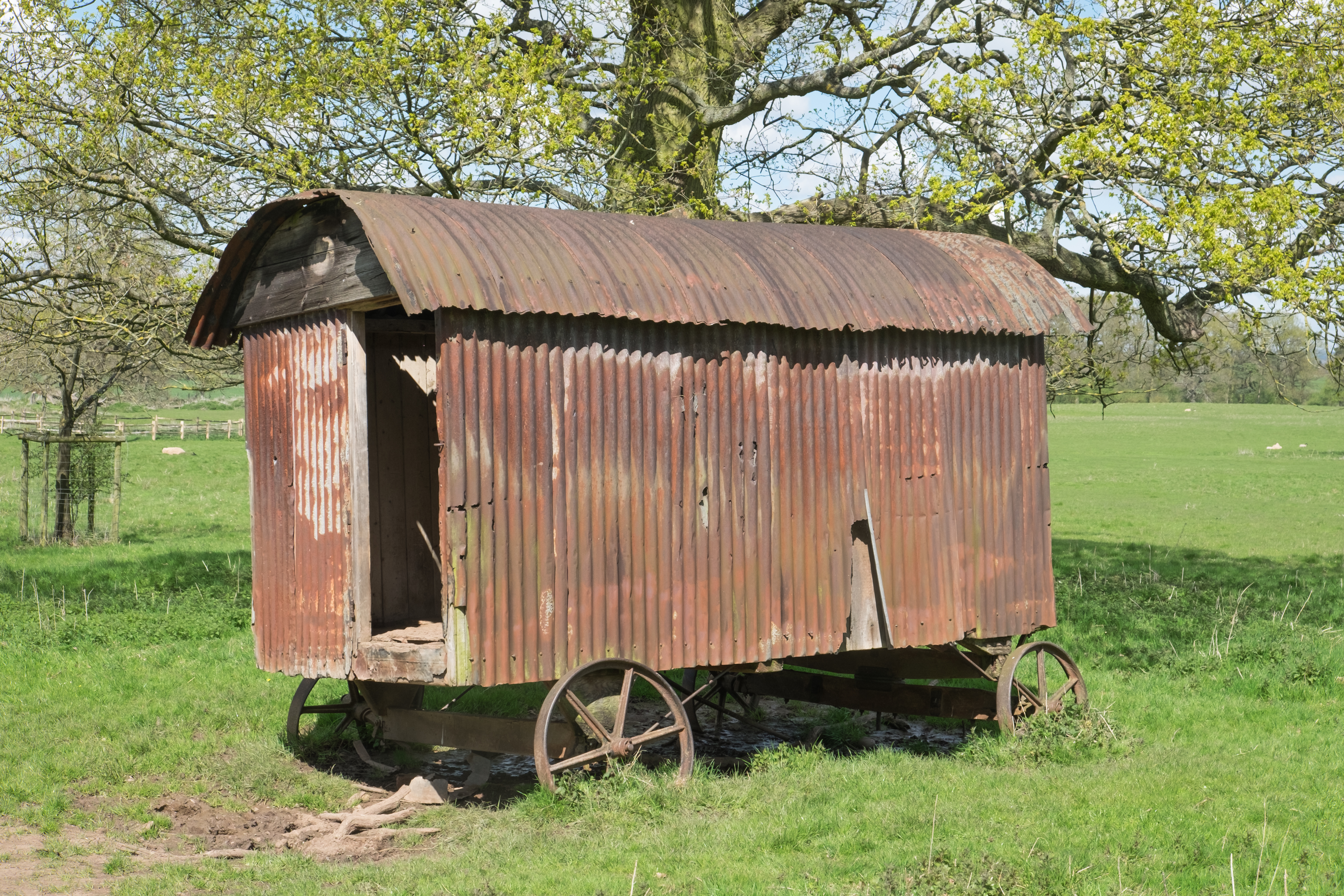Shepherd's Wagon on:
[Wikipedia]
[Google]
[Amazon]


 The shepherd's hut (or shepherd's wagon) was, since the 15th century and into the 20th century, used by
The shepherd's hut (or shepherd's wagon) was, since the 15th century and into the 20th century, used by
shepherdhuts.co.uk
a website devoted to historical shepherd huts; a UK database for surviving huts {{Huts Huts Trailers Tourist accommodations in the United Kingdom


 The shepherd's hut (or shepherd's wagon) was, since the 15th century and into the 20th century, used by
The shepherd's hut (or shepherd's wagon) was, since the 15th century and into the 20th century, used by shepherd
A shepherd or sheepherder is a person who tends, herds, feeds, or guards flocks of sheep. ''Shepherd'' derives from Old English ''sceaphierde (''sceap'' 'sheep' + ''hierde'' 'herder'). ''Shepherding is one of the world's oldest occupations, i ...
s during sheep
Sheep or domestic sheep (''Ovis aries'') are domesticated, ruminant mammals typically kept as livestock. Although the term ''sheep'' can apply to other species in the genus ''Ovis'', in everyday usage it almost always refers to domesticated s ...
raising and lambing, primarily in the United Kingdom
The United Kingdom of Great Britain and Northern Ireland, commonly known as the United Kingdom (UK) or Britain, is a country in Europe, off the north-western coast of the continental mainland. It comprises England, Scotland, Wales and North ...
and France
France (), officially the French Republic ( ), is a country primarily located in Western Europe. It also comprises of Overseas France, overseas regions and territories in the Americas and the Atlantic Ocean, Atlantic, Pacific Ocean, Pac ...
. Shepherd's huts often had iron wheels and corrugated iron
Corrugated galvanised iron or steel, colloquially corrugated iron (near universal), wriggly tin (taken from UK military slang), pailing (in Caribbean English), corrugated sheet metal (in North America) and occasionally abbreviated CGI is a bu ...
tops. Sometimes the sides were also made of corrugated iron.
Use of shepherd's huts by farmers reached a peak in the late 19th century and dwindled in the 20th century with the advent of mechanised farm machinery and electric power reaching even remote farms. Their use persisted in some northern counties in the United Kingdom
The United Kingdom of Great Britain and Northern Ireland, commonly known as the United Kingdom (UK) or Britain, is a country in Europe, off the north-western coast of the continental mainland. It comprises England, Scotland, Wales and North ...
, particularly Westmoreland and Northumberland
Northumberland () is a county in Northern England, one of two counties in England which border with Scotland. Notable landmarks in the county include Alnwick Castle, Bamburgh Castle, Hadrian's Wall and Hexham Abbey.
It is bordered by land on ...
, where the terrain of the uplands supports little else but sheep farming.
There have been numerous different materials used to construct shepherd's huts and after World War I
World War I (28 July 1914 11 November 1918), often abbreviated as WWI, was one of the deadliest global conflicts in history. Belligerents included much of Europe, the Russian Empire, the United States, and the Ottoman Empire, with fightin ...
, when metal was in short supply the chassis were often built with wood and the sides built with interlocking planks of larch or spruce. Sometimes the roof covering would be constructed from felt and tar and insulated with lambswool. Cast iron wheels were frequently recycled from other farm machinery. There are now very few examples of the later 20th century shepherd's huts in the county of Westmorland
Westmorland (, formerly also spelt ''Westmoreland'';R. Wilkinson The British Isles, Sheet The British IslesVision of Britain/ref> is a historic county in North West England spanning the southern Lake District and the northern Dales. It had an ...
which became Cumbria
Cumbria ( ) is a ceremonial and non-metropolitan county in North West England, bordering Scotland. The county and Cumbria County Council, its local government, came into existence in 1974 after the passage of the Local Government Act 1972. Cumb ...
in 1974.
The shepherd's hut was a kitchen, dining room, bedroom, sitting room and storeroom all rolled into one. The designs vary but all were constructed to provide the shepherd with practical and durable accommodation. The old huts had a stove in one corner for warmth and cooking, and a window on each side so the shepherd could see the flock. A hinged stable door, which was always positioned away from the prevailing wind, enabled him to hear the flock, and strong axles with cast iron wheels were used to withstand the constant movement from field to field.Shepherds huts are still in use today, but primarily as
glamping
Glamping is a portmanteau of " glamorous" and "camping", and describes a style of camping with amenities and, in some cases, resort-style services not usually associated with "traditional" camping. Glamping has become particularly popular with 21 ...
accommodation, or as an alternative to a summer house, shed or workshop.
See also
Notes
Further reading
* published book covering the history of Shepherds huts from medieval manuscript images to today's bespoke alternative use huts and vans.External links
shepherdhuts.co.uk
a website devoted to historical shepherd huts; a UK database for surviving huts {{Huts Huts Trailers Tourist accommodations in the United Kingdom